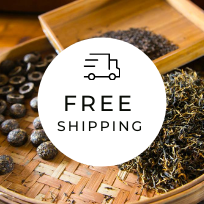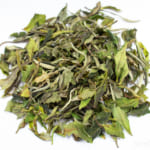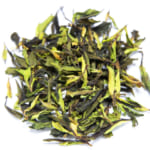- HOME >
- Tea Column
The unexpected reason why the tea with milk is popular
- [2013.09.26] Posted By Akira Hojo
Majority of customers who visit my shop usually drink their tea without the addition of milk and sugar. However, there are quite a number of people who love to drink tea with milk. The tea book often explains that the milk proteins conjugate with the tea tannins and therefore the taste of black tea becomes mellower and less astringent. Others explain that the water in certain places like England is very hard, and therefore, the tea tastes not as good as in straight tea. The concept of adding milk was developed to enjoy a nice cup of tea. Even so, I have totally different point of view for the reason of adding milk into tea.
The calcium in milk produces a tea with stronger body
Tea plucked in early spring has very less dryness or astringency; even if you drink it straight, the tea is of very smooth texture and it gives no disturbance in our mouth. Still many people enjoy drinking spring-plucked tea with milk even after brewing with soft water. The reason why people are comfortable drinking tea with milk has something to do with the calcium content in milk. The calcium has a distinctive function of enhancing the body of tea while at the same time increasing the intensity of its flavor. In Japan, and in Malaysia where my shop is located, generally the water lacks body yet it gives a reasonably strong aftertaste. Thus, when milk is added, the body will be improved and resulting in a tea with a richer taste. This is why people who drink milk tea would spontaneously appreciate it. The flavor becomes obviously stronger if you add milk in a low-end black tea. For your information, the body I was mentioning here does not refer to the thick texture of a tea; but its width, boldness and thickness or richness of the flavor and taste in a tea. With the right practice, you will be able to easily detect the intensity of body with just your nose.
The similarity between milk tea and Hirezake
Do you know a fish called “Fugu”? Fugu is called as Puffer fish in English. This fish is poisonous; yet it is highly appreciated by Japanese and it is one of the most exclusive cuisines in Japan.
http://en.wikipedia.org/wiki/Fugu
In Japan, we have a very strange culture on how we eat Fugu. The sun-dried fin of the Fugu will be baked with strong fire, and then it is served in a glass of Sake (Japanese rice wine). This is called Hirezake. It is said that the Fugu’s fin is able to transform the ordinary Sake into a great quality Sake. It used to be a common practice where people could enjoy a nicer taste of sake despite if lower-end sake was served. Please refer to the following quote from the Wikipedia.
Hirezake – The fins of the fish are dried completely, baked, and served in hot sake, a dish called Hire-zake.
I did try Hirezake, and it really increased the body of the sake. The sake became very rich in taste and it gave a more rounded feeling in my mouth. Hence, I also tried the same attempt using tea. If we put any fish fin into a cup of tea, it will also increase the body and its distinction is very noticeable. The body was improved thanks to the calcium from the fish fin. Therefore, a tea with milk has a lot in common with Hirezake or many other cuisines around the world; especially the soup simmered with fish bone, chicken stock or pork bones. For instance, the Ramen in Japan has great body in their soup thanks to the chicken or pork bones that were cooked together for its soup.
Related Articles
How to get the latest update on HOJO Tea?
1. Follow Twitter, 2. Click "Like" on Facebook, and 3. Subscribe in newsletter. You can have the latest tea news from HOJO Tea.
 Subscribe the Newsletter to enjoy the privileges
Subscribe the Newsletter to enjoy the privileges- You may receive a free sample upon purchase, or you may have the priority to purchase special products. So please remember to subscribe our newsletter as well as the social network.
- Yunnan Chun Jian Green Tea from High Mountain Gardens
- Yunnan Chun Jian Green Tea is now available.This tea is made from naturally grown leaves harvested from high mountain gardens at 2100m above sea level. It has a rich, long-lasting lingering aftertaste, comparable to raw Pu-erh tea. Yunnan as a Distinctive Tea Growing Region Over the past 20 years, we have explored a wide range …
- Limited Loose Leaf Release of 2025 Da Xue Shan Wild Raw Pu-erh Tea
- We have released the 2025 loose-leaf version of Da Xue Shan Wild Raw Pu-erh Tea.This tea comes from wild tea trees that grow naturally in the high mountains of Yunnan Province, at elevations above 2000 meters. This year, we were only able to secure a small quantity for retail, and the current release is available …
NEW ARTICLES
 Yunnan Chun Jian Green Tea from High Mountain Gardens
Yunnan Chun Jian Green Tea from High Mountain Gardens- Yunnan Chun Jian Green Tea is now available.This tea is made from naturally grown leaves harvested from high mountain gardens at 2100m above sea level. It has a rich, long-lasting lingering aftertaste, comparable to raw Pu-erh tea. Yunnan as a Distinctive Tea Growing Region Over the past 20 years, we have explored a wide range …
 Limited Loose Leaf Release of 2025 Da Xue Shan Wild Raw Pu-erh Tea
Limited Loose Leaf Release of 2025 Da Xue Shan Wild Raw Pu-erh Tea- We have released the 2025 loose-leaf version of Da Xue Shan Wild Raw Pu-erh Tea.This tea comes from wild tea trees that grow naturally in the high mountains of Yunnan Province, at elevations above 2000 meters. This year, we were only able to secure a small quantity for retail, and the current release is available …
 2025 Da Xue Shan Wild White Tea Now Available from Yunnan
2025 Da Xue Shan Wild White Tea Now Available from Yunnan- The 2025 harvest of Da Xue Shan Wild White Tea is now available. Crafted from truly wild Camellia taliensis trees growing naturally in the high-altitude forests of Yunnan, this tea offers a purity and character unique to its origin. This year’s unusually dry climate during the withering season was ideal, resulting in a floral and …
 Why Do Some Teas Taste Astringent? Exploring the Causes and Mechanisms of Astringency
Why Do Some Teas Taste Astringent? Exploring the Causes and Mechanisms of Astringency- Tea can range from having no noticeable astringency to possessing a very strong one. What causes this astringency? This article explores the causes and mechanisms behind astringency in tea. Causes of Astringency Astringency arises from the binding of tea components to proteins in the oral cavity, creating a sensation of tightness or dryness. The tongue …
 The Impact of Heat Sources on Tea Flavor
The Impact of Heat Sources on Tea Flavor- It is widely recognized that the material of a kettle plays an important role in shaping the taste of water for brewing tea. Yet, an often overlooked but equally significant factor is the type of heat source used to boil the water. Different heat sources, whether gas, electric, charcoal, or wood fire, can impart distinct …
 New Release of High Mountain White Tea
New Release of High Mountain White Tea- We are pleased to introduce our High Mountain White Tea, sourced from a unique tea garden with two key features: 1. Located at an altitude of 2200-2300m2. Completely wild and untended The ideal natural conditions of this garden result in tea of exceptional quality, offering a pure and gentle, nourishing taste. High Altitude and Wild …
 New Release of Da Xue Shan Wild White Tea 2024
New Release of Da Xue Shan Wild White Tea 2024- We have released the 2024 Da Xue Shan Wild White Tea Loose Leaf. This tea was produced under our direct supervision during our stay in Yunnan Province, ensuring meticulous production management on site. Definition of Wild Tea in Yunnan Province People in Yunnan strongly associate Camellia taliensis with wild tea, regardless of where it is …
 New Release of Wild Pu-erh Jasmine Pearl
New Release of Wild Pu-erh Jasmine Pearl- Out of curiosity, we decided to create a jasmine tea based on Da Xue Shan Wild Raw Tea. This resulted in an exceptionally rare tea, not only in Japan but also in China. Custom Production Network for Jasmine Tea At our store, we source various types of base teas from different regions during the spring. …
 2024 Overview: Our Yunnan White Tea Quality, Process, and Weather Insights
2024 Overview: Our Yunnan White Tea Quality, Process, and Weather Insights- One of the teas we’ve been focusing on in Yunnan Province is white tea. Historically white tea has been produced in both Fujian Province and Yunnan Province for a long time. While white tea from Fujian Province is well-managed during processing, we are dissatisfied with the quality of the raw materials due to the use …
 Yunnan’s Hospitality Culture: Expressed Through Meals
Yunnan’s Hospitality Culture: Expressed Through Meals- In China, as a form of greeting, it’s common to say “你吃饭了吗?” which means “Have you eaten?” However, in Yunnan Province, the phrase “吃饭” is often used in various situations, more like “Eat, eat,” serving as an invitation to share a meal. Yet, with prolonged exposure to Yunnan, one comes to understand that these meal …
Shop Info

Address:Lot No. T-215, 3rd Floor, The Gardens Mall, Mid Valley City, Lingkaran Syed Putra, 59200 Kuala Lumpur
Tel: +603-2287-4537
Business Hour: 10am to 10pm
Category
- New Arrival at HOJO Online Shop
- Featured Articles
- Newsletter
- Types of Tea
- Origin of Tea
- Teapot and Tea Equipment
-
Tea Column
- How to enjoy tea
- Tea Processing
- How to choose quality tea
- Tea constituents and functional effect
- Safety of Tea
- Foods
- Tea Business Operation
- Hobby and Outdoor Activity
- Ranking of Tea
- Video
- FAQ
- Media Release
Profile

- AKIRA HOJO
- I invite you to experience my tea selections.I was born in Nagano, Japan. In university, I studied agricultural chemistry, and I have the master degree in food science. I worked in Japanese food industry for 10 years. I involved in R&D, QC and QA. As a factory manager, I implemented ISO9000 series and managed the factory.
- The Art of Tea Magazine
- We posted the article on “The Art of Tea Magazine No.9, the magazine is published in Taiwan. We featured some scientific view about the tetsubin
- New Straits Times
- The Malaysian National Newspaper, New Straits Times featured HOJO Tea on 17-Oct-2007.
















